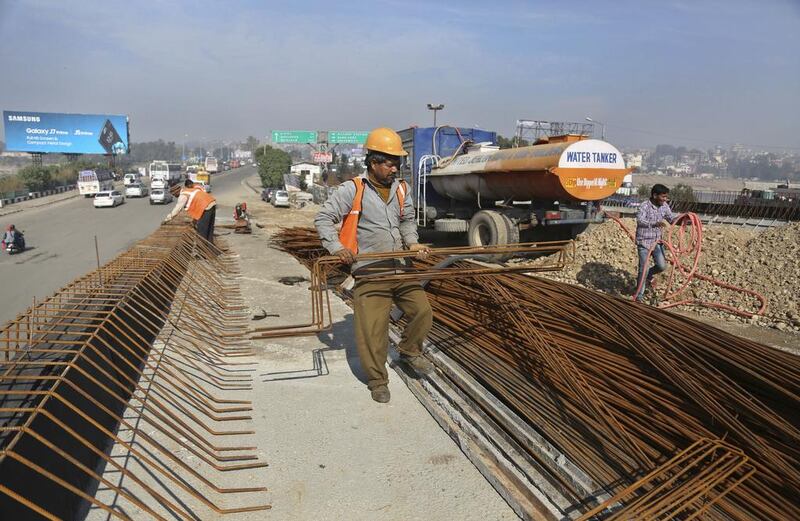The development of a trade corridor between Delhi and Mumbai will help India’s ambition to improve its ranking on the World Bank’s Ease of Doing Business index, attracting much-needed investment to the country, according to a government minister.
In an interview with The National at the Annual Investment Meeting in Dubai, Subhash Pandey, a financial adviser to India's Ministry of Commerce and Industry, said that development along the corridor – a US$90 billion initiative that has the support of the government of Japan – will provide much more land for investment into India, where eight new cities are planned either side of the proposed 1,500-kilometres route.
While India recently climbed four places on the World Bank’s index to 130th out of 189 countries, Mr Pandey said the ranking “is based on what happens in Delhi and Mumbai only … But Mumbai and Delhi are the metropolitan cities of India bursting at the seams. Physically, there is very little scope for manufacturing or setting up new factories.”
He said that progress is being made on developing industrial clusters on either side of the corridor.
“On three projects, the work is going on at very brisk pace in Gujarat and Maharashtra,” said Mr Pandey. “We are talking about infrastructure to offer investors plug-and-play investments.”
The Delhi-Mumbai corridor is one of five proposed economic corridors across the country. Others include a route from Chennai to Bengaluru, from Bengaluru to Mumbai and a route through Delhi across the north of the country from Amritsar in the west to Kolkata in the east.
Mr Pandey said there were various opportunities for the UAE to back India’s infrastructure ambitions. The UAE invested more than $3bn into India last year – part of its commitment to a $75bn fund over five years – he said.
“The current investments from the UAE are far below the potential,” he said.
Overall, India secured $55bn in FDI last year, mainly going towards the development of its roads, rails and shipping networks. The UAE was the 10th largest foreign investor.
“I see various sectors benefiting from the UAE, including tourism and hospitality, but infrastructure will be the biggest,” said Mr Pandey. “In infrastructure itself, there is a requirement of more than $600bn over the next four to five years. Today, what we are seeing is $50bn to $60bn. It is grossly below the level of potential that exists.”
To attract this capital, the country is working to make it easier to open and operate a business. Mr Pandey said that a new business could open within 10 days when, previously, it took more than four weeks on average.
“We are liberalising our investment climate and control. The fast-reforming domestic system is what makes us sanguine that this target [of more than $600bn] is achievable,” he said.
Dushyant Thakor, the vice president of Invest India, the government facilitator for investment into the country, said there are more than 115 projects ripe for financing, with opportunities ranging from $10bn to $62bn. “These things do take time and many investors are in discussions for specific investment projects,” he said.
Mr Pandey said that “almost all gates are open” to foreign direct investment and are completely open in terms of infrastructure investment.
He cited a recent PwC report that said India’s economy will become the third largest in the world on purchasing power parity terms by 2030, with GDP growing from about $2tn currently to more than $20 trillion.
He said that inflation targeting by the central bank meant that India should be able to continue its recent record of strong GDP growth, without “inviting macroeconomic imbalances”.
Growth for the year ending March 31 has been estimated at 7.1 per cent by the country’s central statistics office.
mfahy@thenational.ae
lgraves@thenational.ae
Follow The National's Business section on Twitter





